The English Love Affair with Nature
(Back to Table of Contents)
This extract is illustrated with images not present in the book.

We English, supposedly cold and unemotional, are madly, helplessly, head-over-heels in love with nature. All the experts agree we have been that way since the end of the eighteenth century. What they don’t agree on is why.
Jenny Uglow, introducing her biography of the wood engraver Thomas Bewick, argues that A History of British Birds (1797-1804) arrived at just the right moment, as it ‘coincided not only with the growing interest in natural history but also with a thirst for fresh images of the countryside’. Since the book was also admired by countrymen, she suggests that ‘the nation’s love affair with nature was a reaction to the way that the countryside itself was changing.’ Several forces combined to sweep the English off their feet and into love with nature.
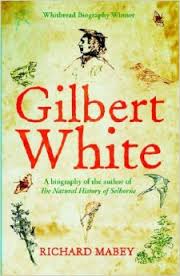
Richard Mabey begins his prizewinning biography of the Hampshire curate Gilbert White by observing that the ‘British … have an affection for nature that is probably without parallel in the industrialised world.’ We have long seen our relationship with our countryside as ‘something quite distinctive, a badge of cultural identity.’ He notes that although we are now mainly urban, we still idealise the rural village. And, he argues, White’s Natural History of Selborne (1789) is the book that first linked village and nature. Selborne became popular at the time when the public developed a taste for ‘escapist and nostalgic’ writing about the country, ironically the time of the greatest unrest that the real countryside had seen for centuries.
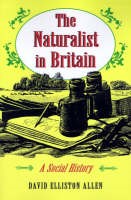
David Elliston Allen, in his social history The Naturalist in Britain, writes that in the eighteenth century the British go from playing with nature as with a new toy, becoming increasingly bold, until ‘Eventually, as the century ends, we find them helplessly in love with it.’ He argues that the initial attraction, with ‘minds still only half-opened, moved more particularly by nature’s glints and surface shimmer: the excitement of sudden, eye-stabbing colour, the calming pleasures of perfect forms, the thrill of fluttering wings’, included many professional painters, specially miniature painters like Eleazar Albin who ‘was first attracted to studying nature by the brilliance of insects’.
The Italian television presenter Francesco da Mosto finds it ‘incredible’ that amateur naturalists could be excited by a rare snail a few millimetres long. He suggested in a 2008 BBC radio programme that the British love wildlife so much because of the Industrial Revolution; the founding of the RSPCA; the nineteenth century Acts of Parliament on cruelty to animals; the increased likelihood of meeting wildlife on a small heavily populated island; and the existence of a large leisured middle class.
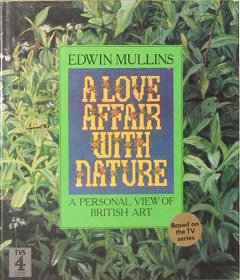
Edwin Mullins begins his book on British art, A Love Affair with Nature, by writing ‘The British love of nature is proverbial. We are a nation of gardeners, walkers, bird-watchers, plant-hunters. We listen for the first cuckoo, lament the last swallow.’ He notes the conflict with ‘other affections: science, progress, trade, wealth’ and the connection between ‘fervent’ conservation and the Industrial Revolution, and argues that Britain is the nation which ‘has demonstrated a love of nature most consistently’.
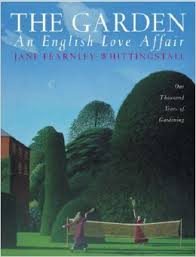
Jane Fearnley-Whittingstall starts her book The Garden, An English Love Affair: One Thousand Years of Gardening on her knees, scraping weeds from the cracks between flagstones with a knife, observing that ‘A love affair with a garden seems to be an especially English form of love’.
For an urban people, the English consume quite a quantity of nature. Over a million are RSPB members. 800,000 belong to a Wildlife Trust. Over four million are National Trust members. Over six million go fishing. Thirteen million families own pets. The UK’s eighteen million gardeners spend over two billion pounds a year on plants and garden products. Seed merchants offer over twenty varieties of seed mixes for us to feed to wild birds. The BBC’s Natural History Unit produces a stream of television programmes, including very expensive series like Life on Earth, Living Planet, Trials of Life, and Planet Earth. And so on, with books and binoculars and bee nestboxes. Even as we descend into the virtual world of mobile electronics and augmented reality, we are desperate to touch nature.
-oOo-

Walking around the London Wetland Centre on a fine spring day, I observe at least eight species of visitor. There are silent solitary types with binoculars and telescopes, mostly but not exclusively men; sociable birdwatchers who stand, chat, and boast about sightings they have made elsewhere; groups of eager photographers with heavy tripods and long lenses; gregarious mothers with pushchairs, snatching a moment of conversation with someone aged over four; a women’s exercise class; school groups; young couples without optics of any sort; older couples with one small pair of binoculars between them. The mothers come mainly for the playground and café, and the young couples maybe don’t mind where they are, as long as they’re together. But all the visitors, without exception, have chosen to be in nature at this moment.
-oOo-
Affection for nature is not limited to obvious nature lovers. Successful hunting and fishing demand practical understanding of animal behaviour, of camouflage, of how the wind carries scent; and of nature conservation. Motorcycle enthusiasts have frequented ‘beauty spots’ like Box Hill since the 1920s. Somehow, in the English mind, oily chains and throbbing machines belong with attractive landscapes. Other groups are driven to use the open air, the countryside, or open water by their choice of activity: those who like to glide, parachute, go hot air ballooning, go hang-gliding or fly microlight aircraft; those who go rock-climbing, fell-running, hill-walking or scrambling; those who canoe, windsurf or sail; those who choose to exercise in nature, such as golfers, runners, cyclists, dog-walkers; naturists too. Perhaps all of these are to a degree implicated in the English love affair with nature.
The affair is ingrained in English life to an extent that astonishes our continental neighbours, some of whom certainly think us mad. The subject is hardly mentioned here, presumably because it is taken for granted. But now that tea-drinking, warm beer and red telephone boxes are in sharp decline, perhaps love of nature is the most English thing left. In his book Elements of Style, William Strunk complains that vague phrases like ‘lover of nature’ leave the reader unable to tell whether what is meant is a love of scenery, rural life, wilderness or ‘the habits of squirrels’. What he did not consider is its meaning in England: ‘all of the above’. The love affair only slightly concerns the natural sciences, though they had a part to play. Its human subjects are more than the English naturalists, important though some of them were. Its players are the lovers themselves – the English, and nature, whatever that is.
How did we arrive at such a passion? Love blossoms in surprising places, but this affair is remarkable for its intensity and persistence. Turning the question around, we could ask why other nations are not all as infatuated with nature as we are. After all, industrialization has swept around the world, so if that were the cause, the affair would have infected nearly everyone by now. England admittedly had a head start, as the industrial revolution began here, but it is hard to believe that is a complete explanation. People sometimes speak rather overconfidently of climate as a factor, observing that love of nature is unlikely in the harsh cold of the far North, or in the sweltering tropics, whereas our temperate warmth is ideal, but other countries with temperate climates have different attitudes to nature.
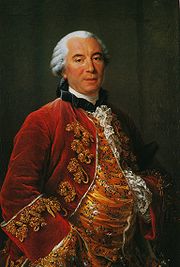
As for the sciences, England has never had a monopoly on famous naturalists. Sweden, for instance, had Carl Linnaeus, enthusiastically seeking out and naming rare plants for his 1758 Systema Naturae. Holland had Georg Eberhard Rumpf working for decades out in Indonesia on his massive six-volume Herbarium Amboinense (finally published in 1741). France had the astonishing, glittering Comte de Buffon, ceaselessly writing his still more enormous 36-volume Histoire Naturelle, published between 1749 and 1788, with a posthumous volume in 1789, attempting to catalogue every animal and mineral in existence. The same applies in other areas of national life: for example, among the Romantic writers, Goethe was at least as celebrated as Wordsworth or Coleridge, and just as passionate about nature. A single cause therefore seems unlikely; perhaps many elements came together at the same time, in England, two centuries ago. Without wishing to suggest we are unique – there are nature-lovers all over the world – we do seem to be particularly obsessed by nature. At any rate, this book tells the story of just one nation’s love of nature; others with more knowledge will have to write about other nations.
To understand the love affair, we need to uncover the factors that caused it to break out and then to grow. To do that, we need to look back in time, first to its birth around 1800, when the sober English fell wildly in love; then back to the Enlightenment, when modern attitudes to nature first emerged; back again, to the first cracks in the mediaeval worldview, as natural theologians turned over one example after another in proof of God’s goodness and wisdom; back to the mediaeval universe itself, small, orderly, and kept in motion by the divine hand, a world where the idea of nature as a lover would have been inconceivable; and so, finally, back to Ancient Greece, where philosophers grappled with big questions like what nature is, and we can see that our concept of nature is not a given. From there, we can understand how it was that a whole nation, forced to move to the industrialising cities, could look back with longing to a lost countryside and an ideal, imagined nature; from there, too, we can start to unravel the many strands of the love affair, as it found new ways to express itself, and grew indeed to have an extraordinary hold on the English way of life.
